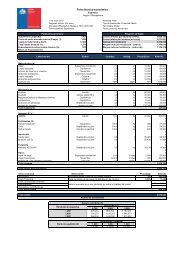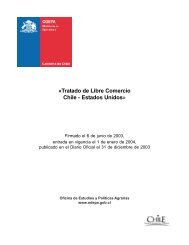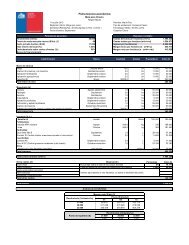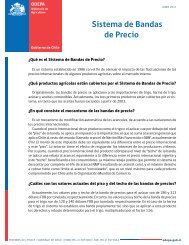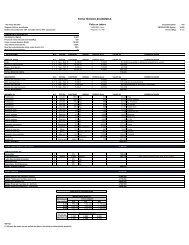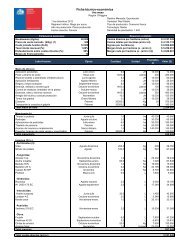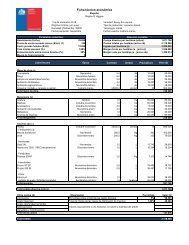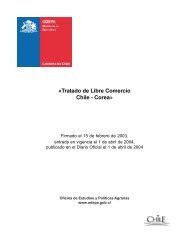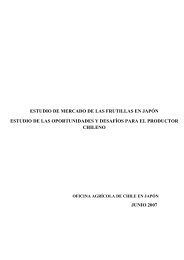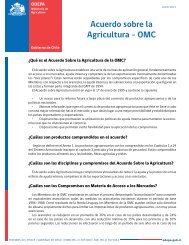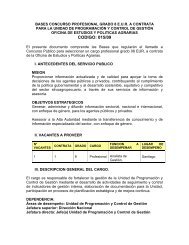nueva portada doc1 - Odepa
nueva portada doc1 - Odepa
nueva portada doc1 - Odepa
You also want an ePaper? Increase the reach of your titles
YUMPU automatically turns print PDFs into web optimized ePapers that Google loves.
ANEXO 2: INTERNATIONAL EXPERT QUESTIONNAIRE<br />
STUDY<br />
“ANALYSIS OF PRECISION AGRICULTURE IN CHILE:<br />
STATE OF THE ART, APPLICATION AND PERSPECTIVES<br />
Introduction<br />
Chilean Ministry of Agriculture has programmed an agenda in which it has put special<br />
emphasis on information networks and technological knowledge/know how.<br />
Within this context the Bureau of Agricultural Studies and Policies (Oficina de Estudios<br />
y Políticas Agrarias, ODEPA) has requested that the Research and Transference Center<br />
for Irrigation and Agroclimatology (Centro de Investigación y Transferencia de Riego y<br />
Agroclimatología, CITRA) at the Universidad de Talca propose a medium term strategic<br />
agenda related to promote Precision Agriculture in the Chilean agricultural sector.<br />
It is hoped that a medium term vision can be developed along with a plan of action<br />
permitting public agencies in the agricultural sector to promote and coordinate a policy<br />
for innovation in the area of Precision Agriculture.<br />
Concerning methodological aspects, the technical team at the university has<br />
considered necessary to know the opinion of international experts in order to form a<br />
world vision of the state of the art in precision agriculture.<br />
We are asking you to kindly respond the questions that follow. Your responses will be a<br />
valuable contribution to the analysis and implementation of the Chilean proposal for<br />
this highly relevant topic.<br />
- Conceptual Description of Precision Agriculture<br />
Do you agree with the following definition?:<br />
“Precision Agriculture (PA) is an agronomic concept of agricultural land management<br />
based on the existence of variable spatial variability in the country. It requires the use<br />
of technology such as Global Positioning Systems (GPS), sensors, satellites and aerial<br />
photographs along with Geographic Information Systems (GIS) to estimate, interpret,<br />
evaluate and understand said variations”.<br />
.<br />
YES ____<br />
NO ____<br />
If the answer is NO, what other element would you add to this definition?<br />
95



